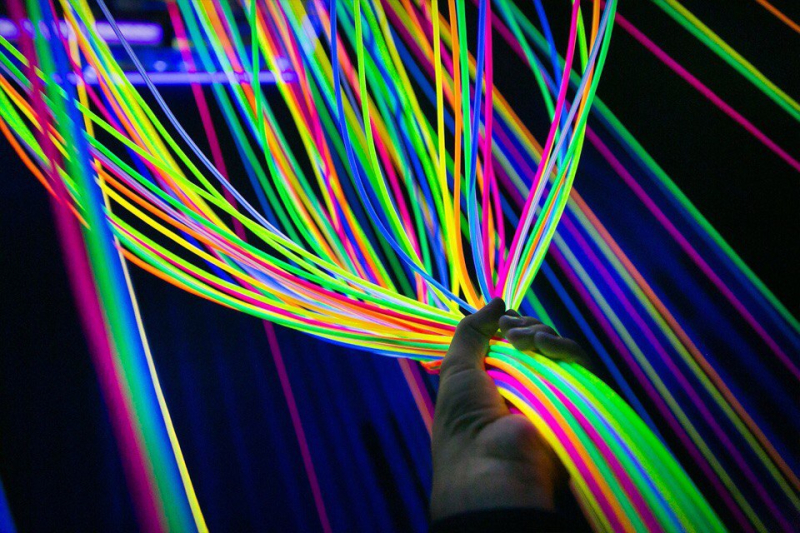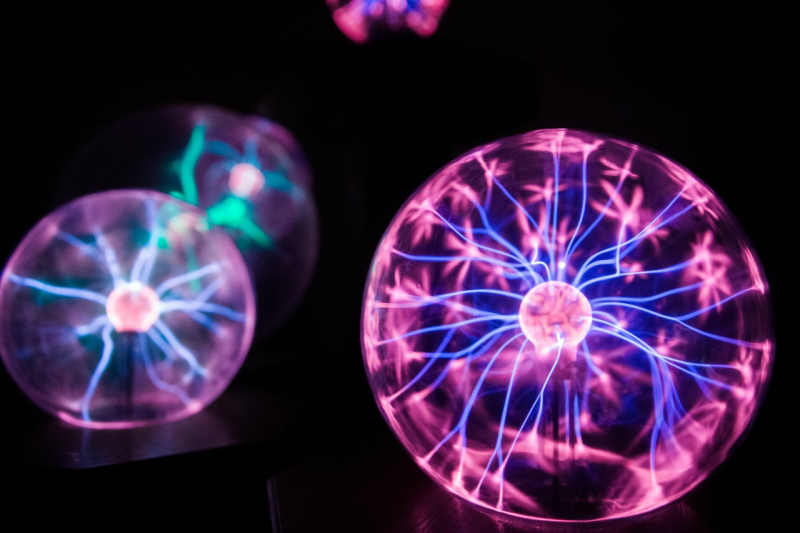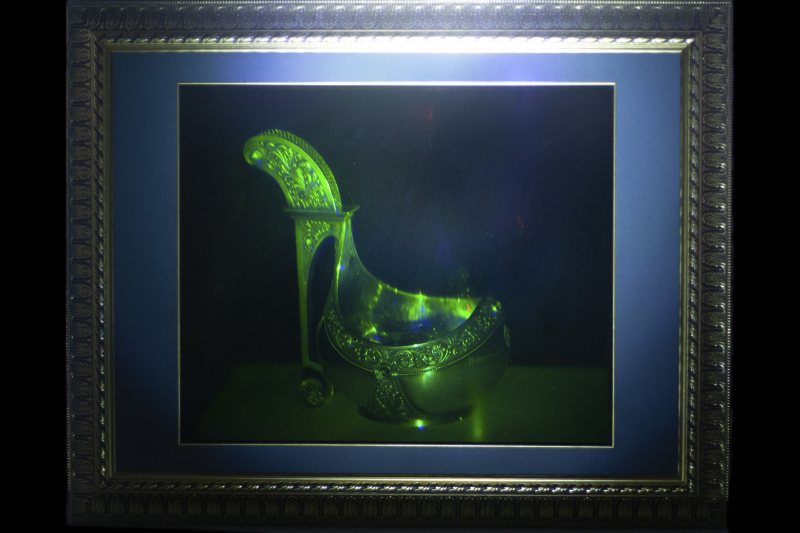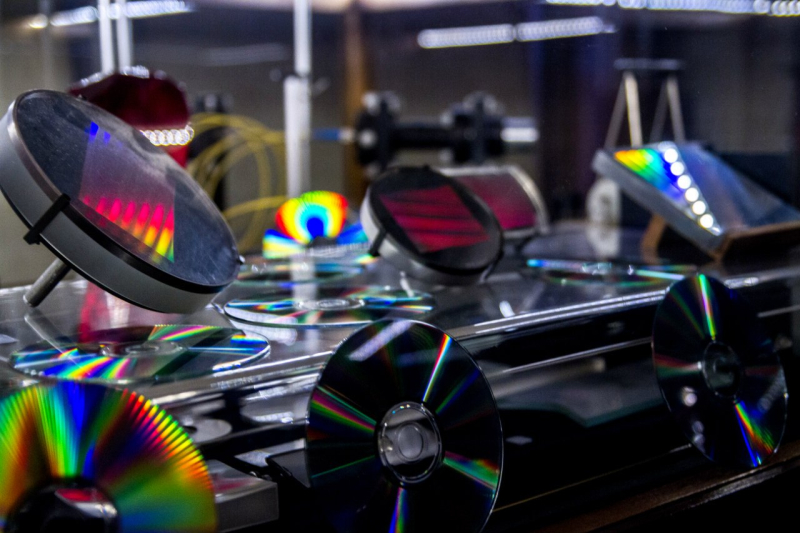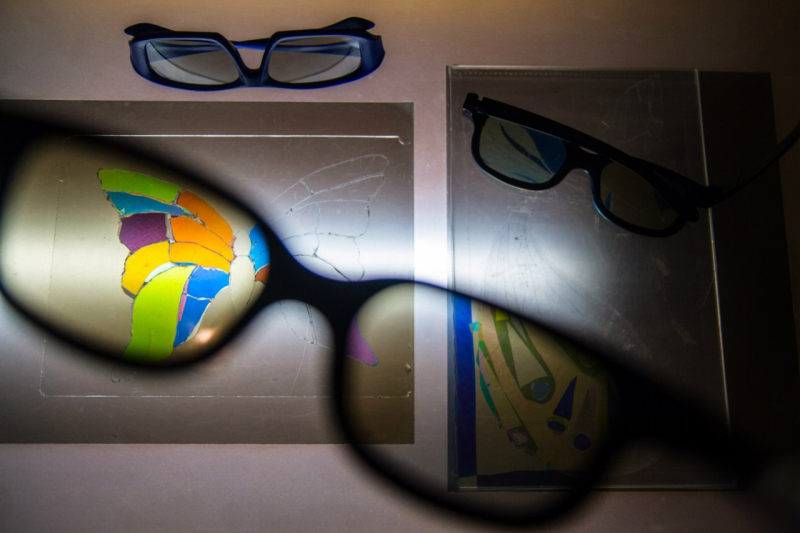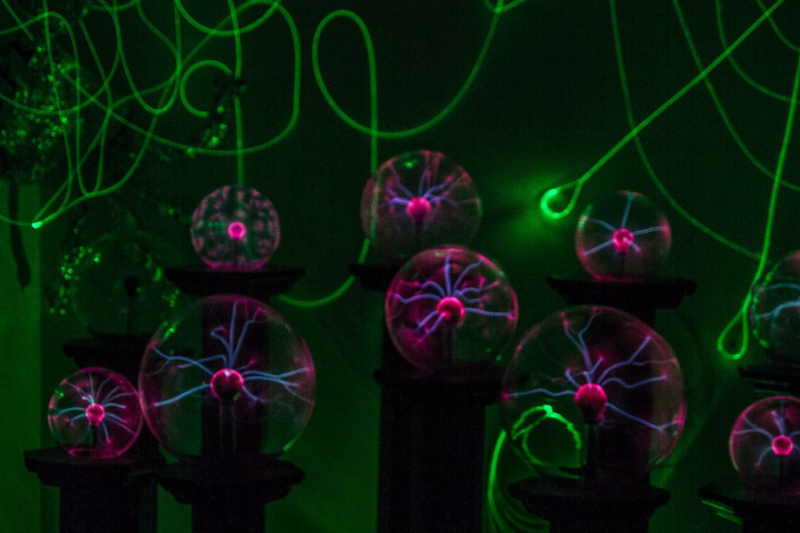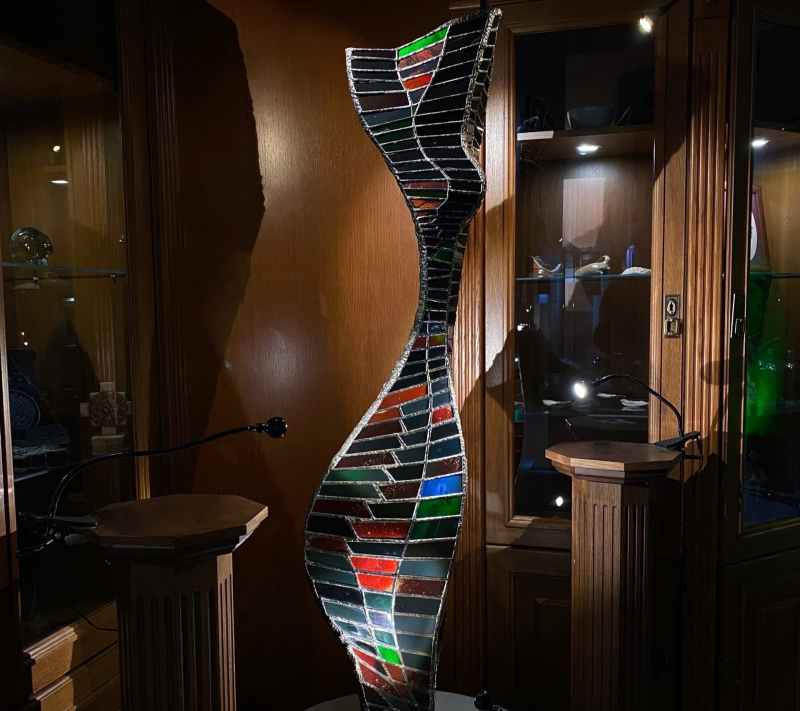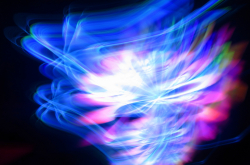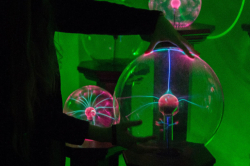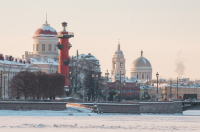Hologram: Bust of Alexander Pushkin
Instead of going to the Arts Square to see the monument to Alexander Pushkin created by sculptor Mikhail Anikushin, you can enjoy the marvelous hologram of the bust, which was recorded at the Vavilov State Optical Institute in 1984 using the method of Yuri Denisyuk, a celebrated physicist and one of the founders of optical holography in Russia. Back in time, this hologram was one of the largest glass-based holograms in the world, measuring 80x120 cm. In December 2022, the hologram was recognized as a cultural heritage item by the expert council of the Polytechnic Museum and the Association for the Promotion of the Development of Science and Technology Museums “AMNIT.”
A video performance by a team of ITMO students, graduates, and staff members for the university's 120th anniversary. Credit: vk.com/alumni.itmo
Hologram: Bratina
A bratina is a large, oval-shaped bowl traditionally used in Ancient Rus’ for drinking wines and honey at feasts, christenings, and name days. In 1909, the celebrated jeweler Peter Carl Fabergé created a bratina, which was decorated with silver inside and gold outside, along with precious stones. The item was bestowed to the Pavlovsky Life Guards Regiment by the emperor and is now stored in the Military Historical Museum of Artillery, Engineers and Signal Corps, and its hologram – in ITMO’s Museum of Optics.
In the 1970s, this hologram was one of the biggest (60x80 cm) and in 2022, it was listed as a cultural asset of national importance. As shared by experts from the Vavilov State Optical Institute, the creation process was not at all easy: they had to work on the hologram in the building’s basement so that vibrations caused by passing cars wouldn’t spoil the exhibit, and the light-sensitive plate on which the laser beams were recorded had to be made by hand.
The Museum of Optics has recently celebrated its 15th anniversary. Ever since its launch, the museum’s exhibits were displayed not only in St. Petersburg but also in Moscow, Yekaterinburg, Bangkok, Shanghai, and Heraklion. As of now, it features over 10 halls, with some focusing on the history of optics and the future of technologies while others introduce visitors to optical phenomena in an interactive way by letting them freeze their own shadows, paint with colors, manage particles in space, or even go for a little flight. What's more, the museum's guests are not just allowed, but are even encouraged to touch most of the exhibits on display!
The Abbe collection
It might seem that all optical devices are made of the same glass, which isn’t true – and the Abbe collection of 144 glass samples is proof of that.
Unlike ordinary one, optical glass is placed with far more excessive requirements in terms of its transparency, color, and homogeneity, as well as several other characteristics such as refraction and dispersion. To consistently obtain desired results, the specialists of the Vavilov State Optical Institute welded reference samples of different recipes and brands, which are now exhibited at the Museum of Optics. The collection turned out to be rather peculiar: thick glass blocks of the Abbe collection, arranged in three rows, resemble organ keys. When the light is off and the music is on, they begin to sparkle with different colors, simulating pressing the keys on an organ.

The Abbe collection. Credit: optimus.itmo.ru
Interactive exhibits
The museum has a total of 11 halls, most of which are interactive. For instance, one hall offers visitors to try finding a way out of a mirror room recreated from the drawings of Leonardo da Vinci and decipher messages recorded using mirrors. In another, the museum's guests can take a selfie in an ultraviolet room against the backdrop of bright neon curtains, or assume the role of a detective who has to figure out which paints are luminescent and safe and which are phosphorescent and outright toxic.
Sculpture from pieces of holograms
The Museum of Optics is a place where you can see optics not only through the lens of science but also that of art. For once, the quirky sculpture created by Pavel Nikiforov from hand-carved fragments of holograms may resemble a woman at first sight, yet you start to see other holographic images once you look at it from a different angle.
The Museum of Optics will be open for a special schedule this holiday season: it will work from 11 am to 9 pm from January 3 through January 7. The museum will offer group tours and creative, themed workshops during which adults and kids alike will be able to create a dragon following its creator, paint a stained glass window, or make a candle or applique postcard. Check here for any updates on the schedule and changes in working hours.
